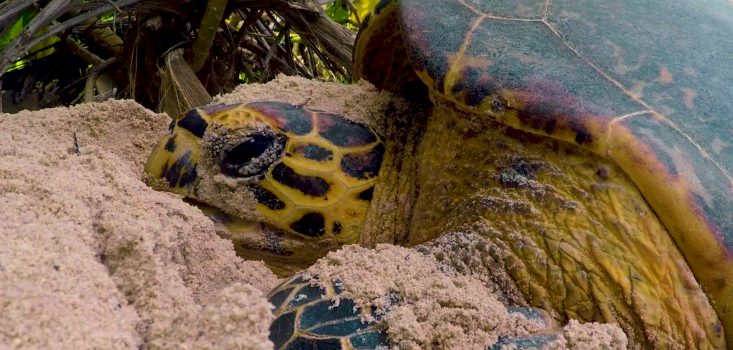The use of electronic animal tracking has revolutionised marine science and conservation; in recent years, animal tracking has become incredibly sophisticated and allowed scientists to observe behaviours that had so far remained completely unknown. Tracking devices are getting smaller allowing them to be attached to a wider range of species, whilst at the same time, battery technology is improving which allows the recording of longer time series of data. Sensors are also becoming more sophisticated so that scientists are now able to observe not just the location of tagged animals, but also their speed, acceleration and even, in the case of sea turtles and seabirds, whether they are in or out of the water. From this wide range of data, scientists are able to recreate the most detailed pictures of animal behaviour.
Prof. Graeme Hays of Deakin University with Dr. Nicole Esteban from Swansea University and Dr. Jeanne Mortimer has been studying turtles in the British Indian Ocean Territory for many years. Their work, which is an integral component of the Bertarelli Foundation’s marine science programme, has been utilising satellite tracking technology on Green turtles which has shown them travelling as far as the coast of Somalia – over 4,000 km away to the west. Dr. Esteban recently returned to BIOT to attach satellite tags to Hawksbill turtles for the first time; once the data from these tagged animals are analysed it will help give the team an even better understanding of how the Territory’s MPA protects sea turtles in the Indian Ocean.




